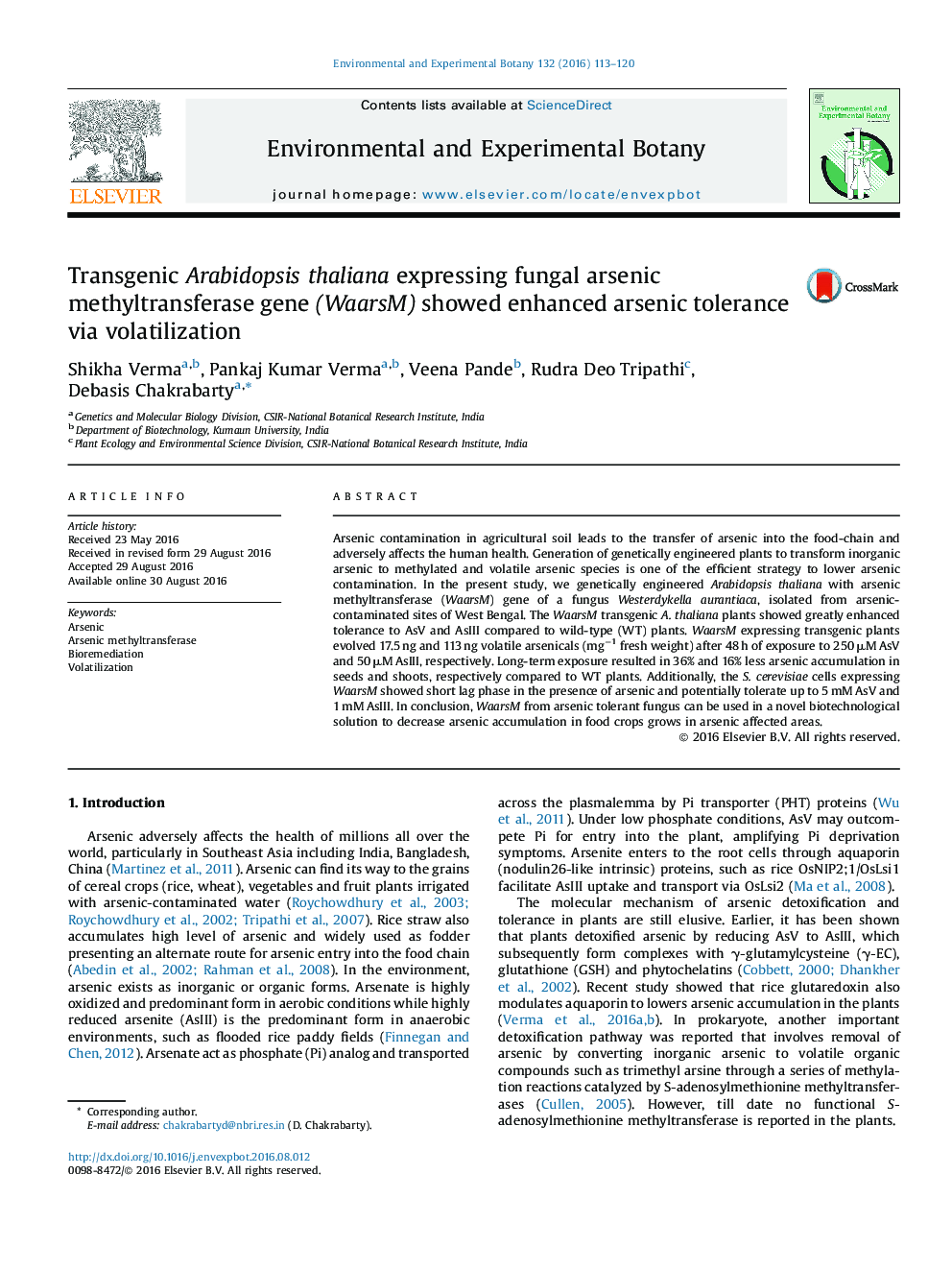| کد مقاله | کد نشریه | سال انتشار | مقاله انگلیسی | نسخه تمام متن |
|---|---|---|---|---|
| 4554050 | 1628045 | 2016 | 8 صفحه PDF | دانلود رایگان |

• Arsenic tolerance in A. thaliana enhanced by WaarsM from a fungus W. aurantiaca.
• Transgenic A. thaliana plants showed increase arsenic tolerance by volatilization.
• Less arsenic accumulation in seeds and shoots of transgenic plants compared to WT.
• WaarsM serve as a suitable gene to generate transgenic crops contain less arsenic.
• Our study also provides an approach to phytoremediation via arsenic volatilization.
Arsenic contamination in agricultural soil leads to the transfer of arsenic into the food-chain and adversely affects the human health. Generation of genetically engineered plants to transform inorganic arsenic to methylated and volatile arsenic species is one of the efficient strategy to lower arsenic contamination. In the present study, we genetically engineered Arabidopsis thaliana with arsenic methyltransferase (WaarsM) gene of a fungus Westerdykella aurantiaca, isolated from arsenic-contaminated sites of West Bengal. The WaarsM transgenic A. thaliana plants showed greatly enhanced tolerance to AsV and AsIII compared to wild-type (WT) plants. WaarsM expressing transgenic plants evolved 17.5 ng and 113 ng volatile arsenicals (mg−1 fresh weight) after 48 h of exposure to 250 μM AsV and 50 μM AsIII, respectively. Long-term exposure resulted in 36% and 16% less arsenic accumulation in seeds and shoots, respectively compared to WT plants. Additionally, the S. cerevisiae cells expressing WaarsM showed short lag phase in the presence of arsenic and potentially tolerate up to 5 mM AsV and 1 mM AsIII. In conclusion, WaarsM from arsenic tolerant fungus can be used in a novel biotechnological solution to decrease arsenic accumulation in food crops grows in arsenic affected areas.
Journal: Environmental and Experimental Botany - Volume 132, December 2016, Pages 113–120